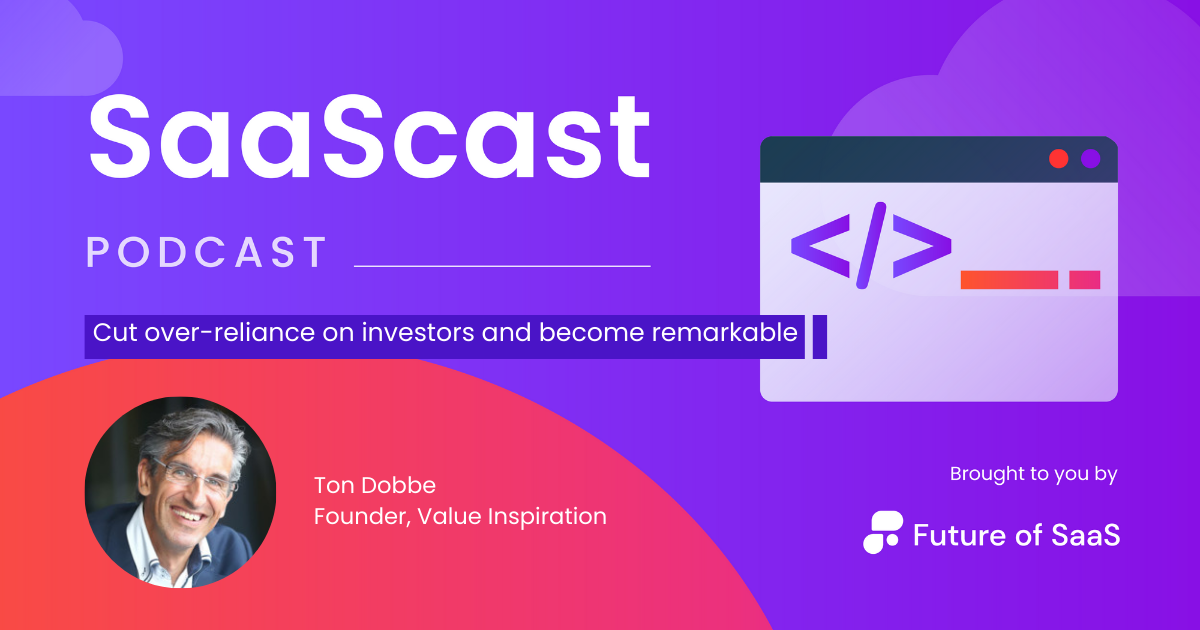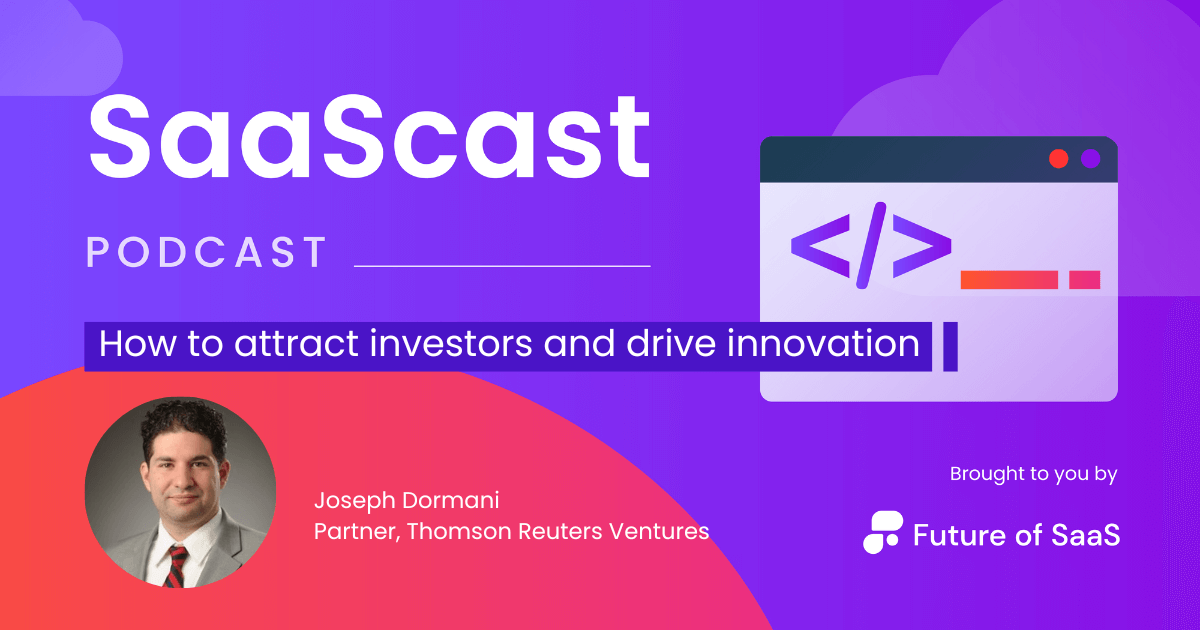This article comes from Edward Keelan’s talk, ‘Funding Series-A SaaS in 2023 and beyond’, at our Future of SaaS Festival 2023, check out the full version here.
For SaaS companies targeting Series A funding, it's been a turbulent ride navigating the startup financing landscape lately. Between soaring valuations, massive pullbacks, and shifting goalposts, the rules of the road have changed dramatically.
Today we'll explore the data-driven trends across public and private SaaS investing, crystallize recommendations for smart founders playing the new terrain, and delve into what the future may hold across this ever-evolving space.
With perspective honed from years working alongside innovative SaaS entrepreneurs, I’ve gathered tactical insights on how to build, fund, and scale companies the smart way in today's complex environment.
Here’s an in-depth data-led journey across today's SaaS funding landscape …
- SaaS becomes red hot
- Private valuations follow suit
- How should Series A companies respond?
- Looking ahead
- Final thoughts
SaaS becomes red hot
Rewinding to 2017, SaaS was gaining clear momentum with investors as an attractive sector. More VCs focused on the space as SaaS became a priority investment area.
When the pandemic hit in early 2020, many assumed investment would halt amidst the global crisis. Yet that gloomy narrative quickly reversed as software emerged as a potential beneficiary.
SaaS surged from popular to red hot almost overnight!
Valuations skyrocketed to staggering levels as investors stampeded into high-growth companies. Public SaaS comps reached multiples like:
- GitLab at 50x ARR
- UiPath over 50x ARR
- SentinelOne above 60x ARR

Unsurprisingly, what goes up also comes down. In late 2021 and into 2022, the market corrected aggressively. High-flying SaaS stocks shed value, with some dropping 80% or more from post-IPO highs:
- UiPath fell nearly 80%
- GitLab shed 30%
- SentinelOne dropped 60%
This public reset rippled into private rounds, as we’ll now explore.
Private valuations follow suit
That public market correction had massive ripple effects into private company valuations across all stages.
According to the SaaS Capital Index, which tracks both public and private SaaS companies, valuations contracted by a whopping 59% on average from their recent highs.
As a concrete example from my work at Octopus Ventures, I was tracking a SaaS company pre-correction that had about £1.5M ARR and was growing revenue at a 100%+ clip annually. By all measures, an extremely solid business.
We were prepared to offer an entry price around 12x ARR, which felt rather steep at the time. Shockingly, when the actual sales process unfolded, this company received bids north of 17x ARR and ended up going for around £20M!
Let's contrast that to the environment today - that same company would now likely fetch an entry valuation around 8-10x ARR.
Stepping back, the data clearly shows that overall capital raised in Europe has declined by over 75% in 2022 compared to the exuberant days of 2021. And that drop gets even larger when you exclude deep tech and infrastructure companies from the figures.
How should Series A companies respond?
So given this new market reality, what does it all mean for Series A companies currently out raising funds or looking to hit the road soon?
Based on everything I'm seeing, here are my top recommendations for early stage founders playing in this new environment:
Become a black belt in efficiency
During the capital abundance of the past few years, efficiency often took a back seat to pursuing growth at essentially any cost. That playbook simply doesn’t work anymore - the rules have changed.
Layoffs are always extremely tough for all involved, but unfortunately many companies have no choice but to rightsize and cut costs substantially to extend runway.
To survive and thrive in the current climate, laser focus on efficient operations is an absolute must. There are no more free passes for poor unit economics.

A few quick thoughts on restructuring or rightsizing teams to gain efficiency:
- Start by designing the ideal org chart you want first, then carefully fit people into it - don't shape structure around current employees.
- Make decisive cuts if needed to materially move the needle on costs - slow, incremental layoffs almost never work. Dragging it out hurts morale and delays realizing major savings.
- Layoffs should be surgical and driven by data - use tools to model target headcount based on metrics like revenue, growth, and margins.
Obsess over your key metrics
In today's environment, growth at all costs is out. Metrics like profitability, burn multiples, gross margins, and rule of 40 now matter immensely to investors focused on capital efficiency.
Pay very close attention to these operating metrics. Know exactly how efficient your business is currently running and where the biggest opportunities are to drive further efficiency.
Be ready to speak in detail to your key metrics - both good and bad, have a solid plan to optimize spend and unit economics.
For example, if you're still burning 2-3x+ your revenue growth, it will be extremely tough to raise a Series A round in this market. Get that multiple down under 1.5x or even closer to 1x. Every basis point counts when capital is scarce.

Optimize go-to-market
When capital was freely flowing, many SaaS companies made big bets by overstaffing sales teams and hiring expensive sales leadership to chase hypergrowth. That playbook isn’t sustainable in the new era.
I'd start by protecting retention at absolutely all costs - get obsessive about account management, reductions, renewals. Churn is toxic, so throw everything you can at keeping existing customers happy.
Next, focus on maximizing productivity of each existing sales rep before blindly adding more. More bodies often backfires. Prove out your sales machine and flywheel before scaling the team.
And think critically about sales leadership. In today's environment laser focused on efficiency, having a VP of Sales with no real track record scaling efficient teams can be a drawback versus a credential.
Plan for a much longer runway
During the boom years, many fast-growing SaaS companies could raise a chunky Series A, then plan for a mega-Series B or C just 12-18 months later. That’s absolutely not the case anymore.
The late stage private funding environment has been deeply impacted. Those big beefy Series C and D style rounds can't be relied on like before. There is no cavalry coming over the hill soon.
So model your finances conservatively, with say 24 months of minimum runway or longer. Get to cash flow breakeven as fast as humanly possible - that's always ideal, but especially critical given the climate.

Having two or more years of runway gives you tremendous flexibility to grow efficiently, make careful investments, and weather any storms ahead.
Educate and align existing investors
Before raising any material new capital in this environment, have candid conversations with your existing investors to align on valuation expectations.
With compressed multiples, your previous valuation likely needs major adjustments. Your existing investor base needs to deeply understand that reality and get on board before approaching new capital sources.
Nobody likes taking down rounds or washing out previous investment stacks. But existing investors must be realistic - sometimes biting the bullet is better than seeing the company run into a wall by chasing an unrealistic number.
Consider alternative sources of capital
If you need to extend runway but want to avoid a dilutive priced equity round given depressed valuations, consider alternative capital sources like venture debt.
Many companies today have successfully turned to firms like Triplepoint Capital when they need runway but can't stomach the valuation hit of new equity. The debt is expensive, but avoids near term dilution pain.
At Octopus Ventures, we actively help our portfolio companies think through options like venture debt, secondaries, recapitalizations, and more. The goal is maintaining maximum flexibility and runway in this turbulent environment.

Looking ahead
Predicting the future is difficult, but some trends seem likely:
⛈️ SaaS has historically weathered downturns before eventually rebounding. Efficiency will be key again if macro uncertainty deepens.
⚖️ Less mature players are well positioned for Series A/B with valuations rebalanced and ability to pitch prudence.
💥 Companies that resize too slowly risk collapse; quick action is still prudent.
📈 Profitability and sustainable growth matter more than growth alone. Disciplined businesses can thrive in any climate.
💸 Secondaries and recapitalizations should increase as investors seek liquidity after compressed IPO access.
⏳ Macro volatility around inflation, rates, recession odds, etc. will continue. Keep costs flexible to adapt.
Final thoughts
Despite all the market chaos and uncertainty, I remain incredibly excited about the Series A space as an investor.
Why? Because valuations have come back down to rational levels, letting us have real conversations about economics and building sustainable businesses again. For many smart early stage teams, now is a time of opportunity amid the surrounding storms.
The key is maniacal focus on efficiency, transparency on metrics, and constant communication with investors.
Do those things, build methodically, and success can absolutely still be achieved even in this climate! Wishing you the best of luck.




